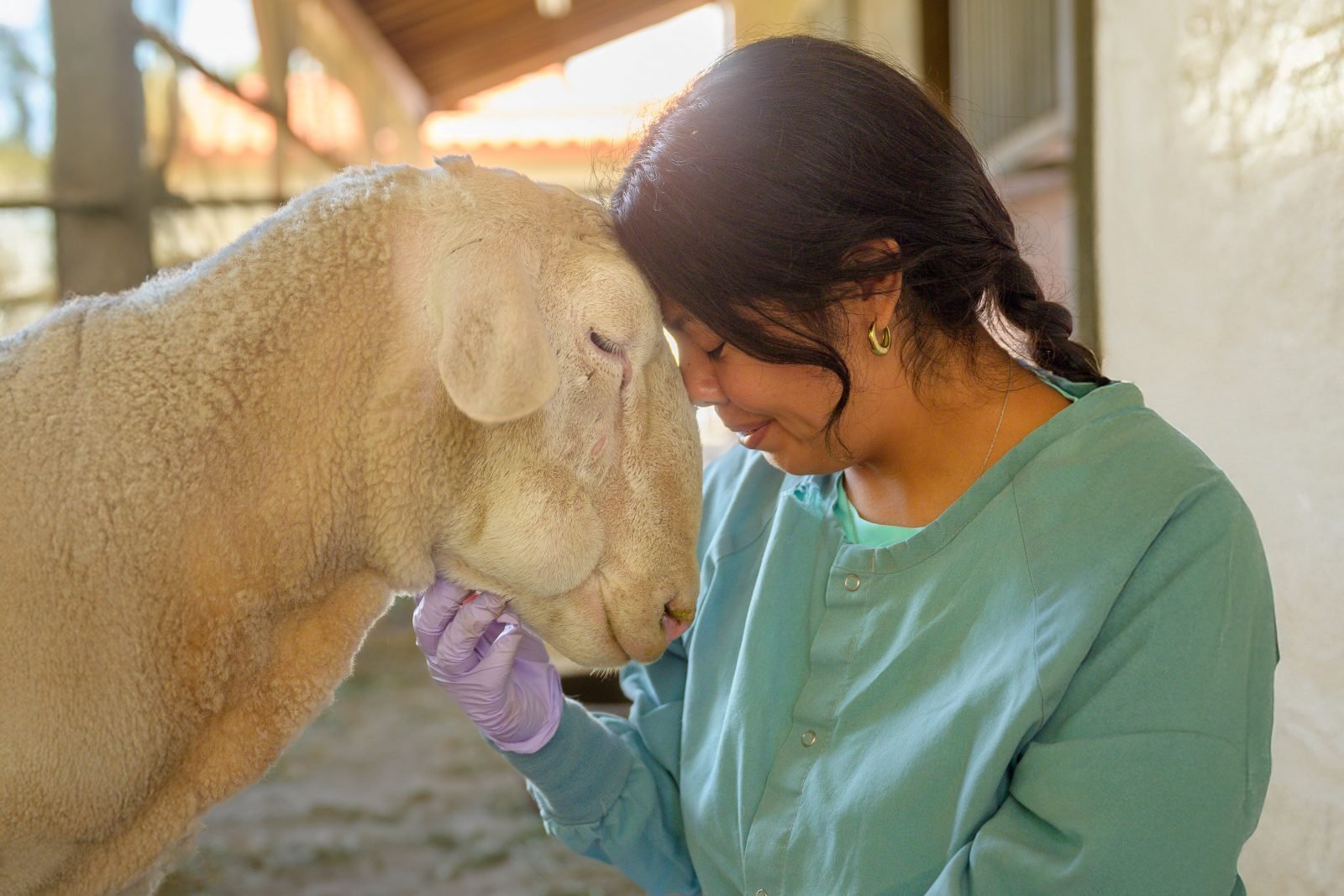They had been so severely neglected that the humane officer who found and seized them feared for their lives. Now diverted from the bleak path once looming before them, the animals have reached Farm Sanctuary, where all roads lead to promise.
A bloody, broken horn on Susie Moo was the first of many horrors Santa Cruz Animal Services Supervising Field Manager Todd Stosuy would find at the Watsonville abattoir he drove by in May. Launching an official investigation after spotting more than a dozen animals in noticeable distress, even from the road, he counted nearly 100 farm animals in sum – including rabbits, chickens, cows, goats, and sheep – awaiting death in a filthy, desolate feedlot without adequate food and water.
The animals, Stosuy soon learned, had either been bred on the property or acquired at auction by the slaughterhouse owner and confined in the feedlot until hand-selected by local customers and slaughtered on site – much like the live animal markets that proliferate in urban centers such as New York City. The sickest, most malnourished animals had likely been on the property the longest and therefore had come closest to succumbing to neglect before even reaching the kill floor.
At our California Shelter, where the confiscated animals are still being rehabilitated after all they endured, veterinary assessment revealed that a number of the goats had severe upper respiratory infections, parasite infestations and fungal infections. One goat had an eye ulcer that had been left untreated for so long she was almost blind, and most had overgrown, rotten hoofs that made walking difficult. Sadly, one of the goats was too sick to even stand, and despite our efforts to save her, she passed away soon after her rescue – exposing, yet again, the immense suffering that comes of downed animal abuse.
Despite the poor state of the seized animals, the California State Department of Agriculture, whose agents visited the Santa Cruz County facility after Stosuy’s investigation, determined that the slaughterhouse conditions posed no health risk to consumers – essentially allowing for the continued operation of the facility and the prolonged suffering of the animals who remained there simply because they hadn’t yet fallen to such extreme neglect that they could legally be removed by animal control.
“It is not only frustrating that the Watsonville animals we were able to bring to sanctuary endured such neglect, but also alarming that such sick animals were destined for dinner tables,” said California Shelter Director Leanne Cronquist. “After the rampant abuse we saw at the Chino slaughterhouse earlier this year, followed by a massive beef recall, as well as the abuse our own investigators have witnessed at small and large facilities alike, it’s clear that this kind of cruelty and recklessness is systemic.”
As the slaughterhouse proprietor awaits a November appearance in court, where he will be brought up on four cruelty charges for his crimes – including holding and denying a downed animal food, water and veterinary care, a violation of a state law we lobbied for in 1994 as part of our more than 20-year-long No Downers Campaign, as well as a more recent citation for failing to stun an animal prior to slaughter – Raposal, Debra, Annie, Susie Moo, and the rest are defying the odds by growing stronger, their renewed hope and will to survive testaments to the adversity we can overcome by remaining vigilant in our fight against it.
To help the Watsonville animals, and other farm animals in need, make a donation to our Emergency Rescue Fund today!






